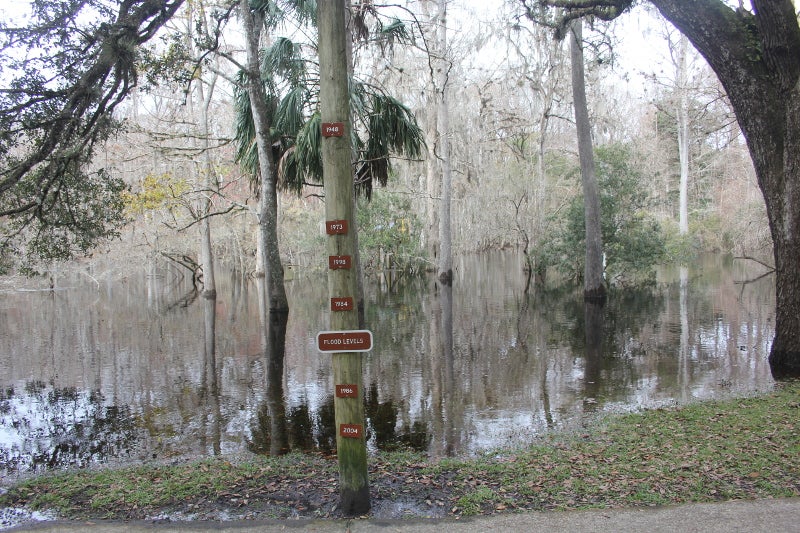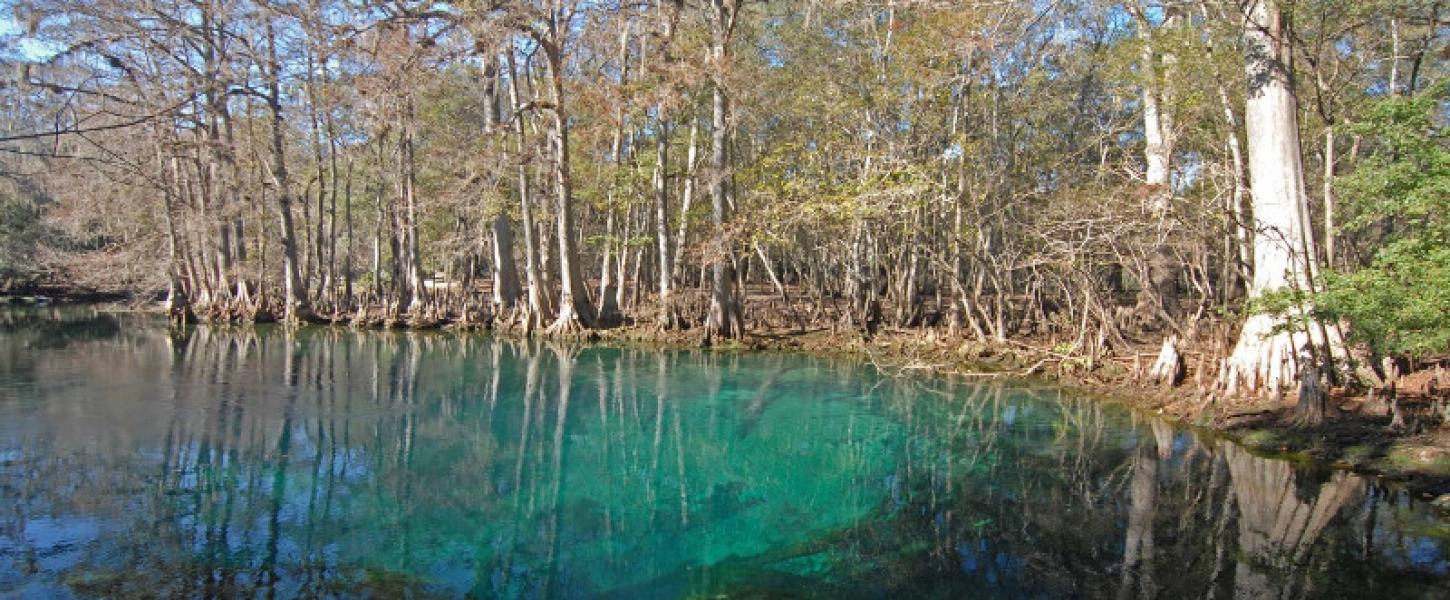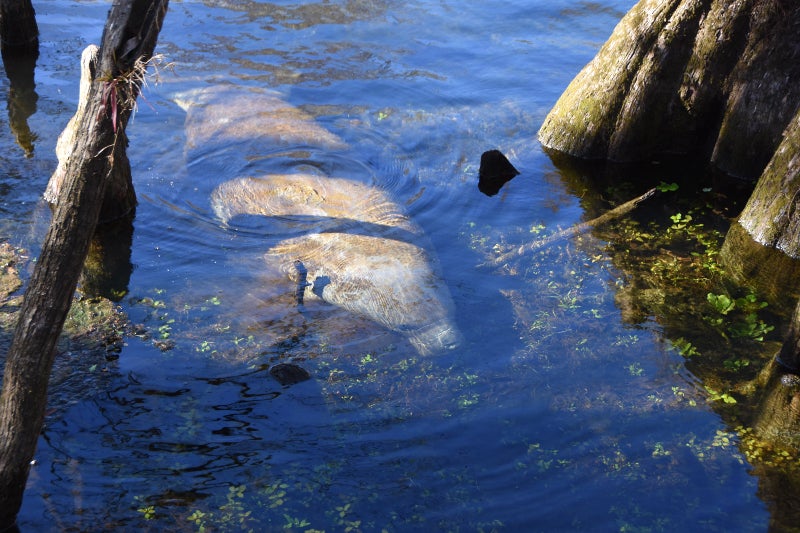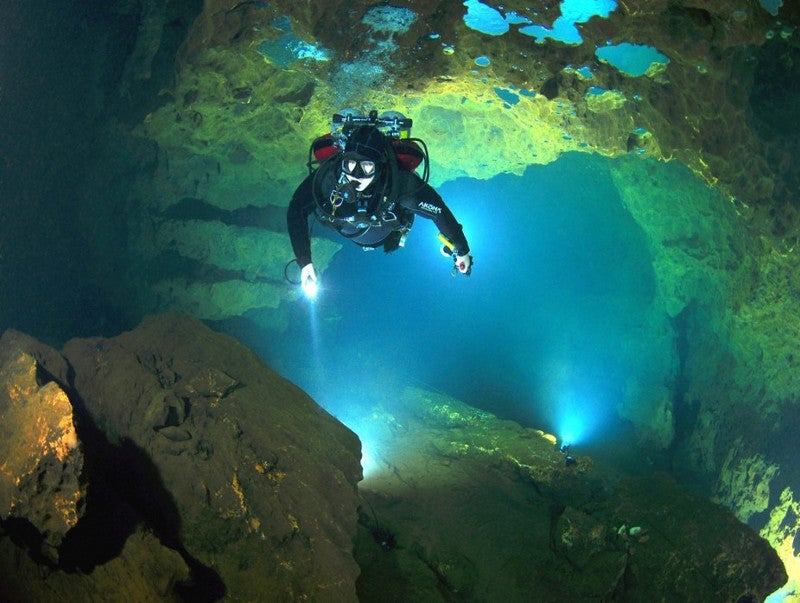
Springs at Manatee Springs

One of Florida’s 33 first-magnitude springs, Manatee Springs averages a flow of anywhere between 50 to 150 million gallons of water per day and is the largest single spring flowing into the Suwannee River. The spring water flows through the quarter-mile-long spring run to join the river en route to the Gulf of America. The springshed itself covers an area of over 200 miles, providing water to much of the surrounding area.

This is an ever-changing system. The spring run may be crystal-clear, making it easier to see the park's namesake manatees, sometimes numbering up to 20. Park staff and volunteers record manatee sightings within or adjacent to the park on a daily basis. When the Suwannee River floods, water levels can be high enough to completely submerge the boardwalk that meanders along the spring run. In these conditions, the dark, tannic waters of the river fill the spring run and visibility is greatly reduced. The occasional splash of a fish at the water’s surface is an indication that life indeed still abounds.

The wildlife found at Manatee Springs State Park comes in a variety of forms, from feathered to scaled, from mammals to insects. Reptiles like the American alligator, several species of turtles and three different snakes inhabit the area, dependent on the water and fish that provide habitat and food sources. The manatees cannot be forgotten, as this warm-blooded mammal often takes refuge in the winter months in the cozy waters of the spring that remain a constant 72 degrees year-round. The gentle giants’ presence is often given away by disturbance of fish and of course a large gray shape seen in the water on a clear day. Visitors who are quiet and observant may be lucky enough to hear the sound of a manatee’s nose breaking the surface of the water as it takes a breath of fresh air.

People have been using and enjoying Manatee Springs for many years. In 1972 it was designated a registered National Natural Landmark, a recognition given only to sites with exceptional natural and historical value. One of the park’s most well-known features, in fact, is an extensive series of caves that underlie the spring. Certified cave divers are drawn to the seemingly endless maze of tunnels and passages found underwater here, and many have helped to map more than 5 miles of known routes, as well as determine new information about the flow of water in the spring.

The Catfish Hotel is a popular starting point for these dives, named because of the impressive population of bottom-dwelling fish found there. Other creatures that may be encountered under the surface include gar and other fish, the near-transparent cave crayfish (Procambarus lucifugus) and the Hobb’s cave amphipod (Crangonyx hobbsi). The surface of the water at the hotel is often covered in duckweed, so be prepared to look a little green at the end of your dive!
There is nowhere else in the world quite like Florida’s springs, and Manatee Springs State Park is a prime example of the majesty and beauty of these premier ecosystems. So whether you want to see wildlife, swim a little, dive or just enjoy the view, Manatee Springs State Park will be here for you.